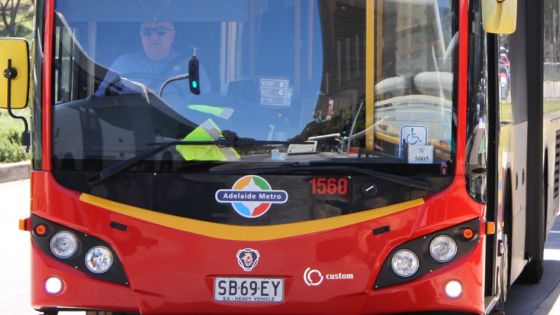
- About Us
- Careers
- News
- Contact Us
Drive with care and be bus aware

Tuesday, 13 May 2025
The State Government has released confronting vision highlighting the dangerous mistakes drivers make around buses, in a bid to encourage motorists to take greater care and avoid preventable collisions.
Onboard security vision shows motorists cutting in and colliding with buses, triggering accidents and close calls, putting drivers, passengers and other road users at risk.
The vision is being released as part of National Road Safety Week 2025 and highlights the daily challenges bus drivers face when motorists do not leave a safe distance between their vehicle and the bus or fail to give them right of way.
In one incident, a prescribed security officer is thrown forward in a bus when the driver is forced to brake suddenly to avoid a crash after being cut off by a motorist as they merge left into a bus lane on Grenfell Street.
Bigger buses in the fleet can carry up to 90 passengers and weigh more than 25 tonnes – four times as heavy as an elephant – and can take more than 25 metres to stop when travelling at 60 kilometres per hour.
By cutting in front of a bus, or moving in quickly from the side, a motorist minimises the space a bus has to safely stop or complete a turn, increasing the risk of a collision. Sitting in a bus driver’s blind spot can also pose a risk.
An average 205,250 people catch Adelaide Metro services each day, with more than 2.7 million bus services running each year.
To keep drivers and passengers safe, Adelaide Metro has a range of safety measures in place on some vehicles, including lane departure and blind spot detection, crash avoidance warning, and driver alerts when vulnerable road users such as pedestrians and cyclists are present. Electronic coaching tools are also used by some bus operators to track drivers’ on-road performance.
Motorists must give way to buses displaying the "Give Way to Buses" sign if the bus is indicating to move out from the kerb. This rule applies to the left lane on a multi-lane road, and if the left lane is a bike lane or obstructed, drivers in the next lane must also give way.
A bus lane is marked by signs and is set aside for the exclusive use of public buses, emergency vehicles, cyclists and taxi drivers during the times stated on the signs. If there are no times stated, it applies at all times.
Tips for motorists:
- Follow the road rules, be cautious, courteous and patient around buses.
- Slow down when you see a bus is indicating to move away from a stop and give them space to merge into traffic.
- Be mindful of stopping distances and do not brake suddenly in front of or tailgate a bus - the less room in between a vehicle and a bus, the less room both have to stop.
- Take extra care when you enter a road or change lanes in front of a bus.
- Avoid travelling in blind spots as the bus driver may not be able to see you.
- When a bus is turning, give them plenty of space
- Remember our green fleet vehicles are quieter than a diesel bus, so stay alert when walking, cycling or riding around battery electric buses.
Download vision of the bus and car interactions here.